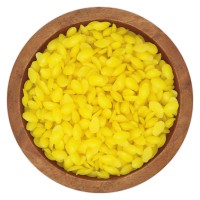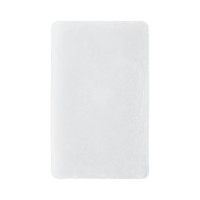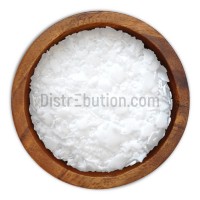What is candle wax made of? Short and simple explanation:
Nowadays we light candles on all sorts of occasions and events. Whether at Christmas or Easter, as a christening or communion candle, as a candle for the grave or as a scented candle, or simply because we find them beautiful. But in former times there was no light or seal without wax. Even edible things could be protected from the air by wax. Nevertheless, and precisely because of this, we keep asking ourselves what wax (candle wax) is actually made of and how it is produced. Which materials are used in the production and how is candle wax obtained? We try to answer these questions in this article.
Wax in general explained:
Wax is a substance that starts to melt at over 40°C and has a wax-like consistency at room temperature. When exactly the wax reaches its so-called melting point depends on the type of wax or wax mixture. The melting point can be around 40 °C or even above 100 °C. As soon as the wax begins to soften, it usually becomes stickier and then quite quickly becomes thin, similar to an oil at room temperature. Candle wax (wax) is actually not soluble in water, but it can be easily dissolved in organic substances or solvents. Waxes come from various plants, animals or mineral substances. Even the composition varies from manufacturer to manufacturer. This is due to different processes and formulations. You can find more details on our website under explanations of paraffins, bee waxes, stearines, natural waxes and other waxes.
Many people associate wax with bees. This is true, because the bee produces one of the most famous waxes - beeswax. But most candle wax today is paraffin wax. This is the most widely used wax in the world. This applies to candles but also to other applications.
Beeswax is probably one of the most beautiful waxes but also one of the rarer ones as an animal wax.
The most used natural wax for candles is the so-called stearin and other fats.
In the following we explain three important candle waxes. Further special candle waxes like rapeseed wax, soy wax or other candle waxes can be found in our shop.
This is paraffin wax:
- Paraffin wax is a refining product in the petroleum processing industry and is then hydrogenated and purified
- Paraffin wax is the most widely used raw material for candles.
- The manufacturing process is quite inexpensive.
- Of great importance in the production process of paraffin wax as candle wax is to make the paraffin odourless and to reduce the oil content as much as possible.
- The final product is called paraffin wax and is usually available in pastilles or plates (slabs). In very large quantities paraffin wax is supplied as candle wax also heated in liquid form.
- After the manufacturing process paraffin wax is a clean, white and odourless candle wax.
- Besides candle production, paraffin wax is also used as a basic material in technical, cosmetic, medical and many other areas.
This is stearin:
- Candle stearin consists of different so-called fatty acids. These mixtures of e.g. palmitinic acid and stearic acid result in a solid substance known to us as stearin or stearic acid.
- Candle stearin is extracted from palm oil.
- A big advantage of stearin is that the remains of a candle are biodegradable in the long term, even if they are not compostable in the short term.
- Compared to paraffin, stearin is much harder but also more brittle. The so-called scratch resistance is higher. Different types of stearin have different effects on candles. Stearines make candles look whiter and form crystalline structures depending on the type.
- Stearin and paraffin are often mixed together. At the same time, stearin and paraffin wax are often mixed with other natural waxes such as beeswax or micro-waxes. An unwanted mixture of beeswaxes with stearines or paraffins is called adulteration.
This is beeswax:
- Beeswax is one of the most natural and well-known waxes and also candle waxes in the world.
- It captivates with its beautiful colour and its unique intensive smell.
- It has been used in ancient times for a wide variety of applications.
- Beeswax is, as the name suggests, produced by bees.
- Originally beeswax is white. The wax gets its yellowish colour from contact with pollen and honey.
- The smell of beeswax also changes due to the origin of the beeswax. In every country different trees etc. are in bloom and therefore each beeswax has its own smell and can also be very differently coloured.
- Due to limited availability beeswax is a relatively expensive product. This is why paraffin or stearin is often used for the production of candles.
- Beeswax can also be used to coat food. Beeswax is also used, for example, for the production of beeswax cloths.
Further explanations and information can be found in the individual articles.





